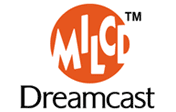Difference between revisions of "Mil-CD"
From Sega Retro
m |
|||
| Line 7: | Line 7: | ||
Later models of the Dreamcast discontinued support for Mil-CD. | Later models of the Dreamcast discontinued support for Mil-CD. | ||
| − | == Discs == | + | ==Discs== |
*''[[Nine Chairs]]'' (1999) | *''[[Nine Chairs]]'' (1999) | ||
*''[[Kita e. White Illumination Pure Song and Pictures]]'' (1999) | *''[[Kita e. White Illumination Pure Song and Pictures]]'' (1999) | ||
| Line 17: | Line 17: | ||
*''[[Space Channel 5 Ulala The Movie]]'' (1999) | *''[[Space Channel 5 Ulala The Movie]]'' (1999) | ||
| − | == External | + | ==Magazine articles== |
| + | {{mainArticle|{{PAGENAME}}/Magazine articles}} | ||
| + | |||
| + | ==External links== | ||
*[http://web.archive.org/web/20010314190533/http://www.sega.co.jp/milcd/home.html About Mil-CD (Sega)] (Japanese Archive) | *[http://web.archive.org/web/20010314190533/http://www.sega.co.jp/milcd/home.html About Mil-CD (Sega)] (Japanese Archive) | ||
*[http://www.dricas.com/special/milcd/index.html About Mil-CD (Dricas)] (Japanese) | *[http://www.dricas.com/special/milcd/index.html About Mil-CD (Dricas)] (Japanese) | ||
| Line 23: | Line 26: | ||
[[Category:Mil-CD]] | [[Category:Mil-CD]] | ||
| − | [[Category: | + | [[Category:Dreamcast hardware]] |
Revision as of 23:27, 23 August 2016
This teeny-tiny article needs some work. You can help us by expanding it.
Mil-CD was a compact disc storage format created by Sega in 1998 to add multimedia features to normal CDs for use on the Sega Dreamcast. Only eight albums were released on the format, and all were exclusive to Japan.
As code was not authenticated, it allowed hackers to run their own code on the Dreamcast, opening the way to homebrew games and demos from the Dreamcast's early years.
Later models of the Dreamcast discontinued support for Mil-CD.
Discs
- Nine Chairs (1999)
- Kita e. White Illumination Pure Song and Pictures (1999)
- Heartbreak Diary (1999)
- Checkicco no Miru CD (1999)
- Hang the DJ (1999)
- Himitsu Original Sound Track (1999)
- D2 Original Sound Track (1999)
- Space Channel 5 Ulala The Movie (1999)
Magazine articles
- Main article: Mil-CD/Magazine articles.
External links
- About Mil-CD (Sega) (Japanese Archive)
- About Mil-CD (Dricas) (Japanese)
- Dreamcast Hack
